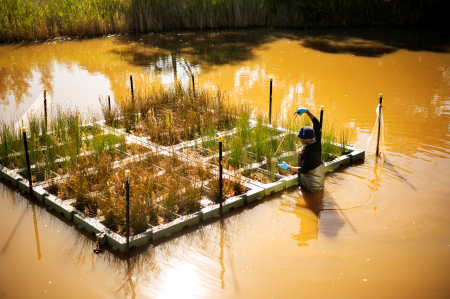Chief Investigators: Dr John Awad, Professor Simon Beecham, Dr Chris Walker, Dr Barbara Drigo, Dr Joanne Vanderzalm
Year commenced: 2020
Problem
Globally, constructed floating wetlands (CFWs) are being increasingly used to remove pollutants and improve water quality in wastewater treatment ponds, urban stormwater basins, and natural waterbodies and waterways. CFWs use wetland plants to remove pollutants from water beneath the wetlands like hydroponic systems access nutrients for growth. The plant roots also filter suspended solids from the water and provide a large surface area for microbial biofilm growth.
Project Summary
Our overall project aims to address two areas: reusing construction materials, and determining the performance of the floating wetland as a treatment process. We are currently focussed on the latter, as the latest research demonstrates that properly designed CFWs can be a highly efficient, cost effective, passive water treatment system option. However, it is important to understand the underlying processes of CFW operation in order to optimise their design.
Impact
In collaboration with our sponsors, CSIRO Land and Water, City of Salisbury and Clarity Aquatic, who are a major Australian designer and supplier of CFWs, we created a full-scale demonstration system on UniSA’s Mawson Lakes campus. The knowledge we generate from this system will provide engineers, designers and other water industry professionals with a basic understanding of some of the fundamental concepts involved in designing an effective CFW systems.





